Related Research Articles

Acoustics is a branch of physics that deals with the study of mechanical waves in gases, liquids, and solids including topics such as vibration, sound, ultrasound and infrasound. A scientist who works in the field of acoustics is an acoustician while someone working in the field of acoustics technology may be called an acoustical engineer. The application of acoustics is present in almost all aspects of modern society with the most obvious being the audio and noise control industries.
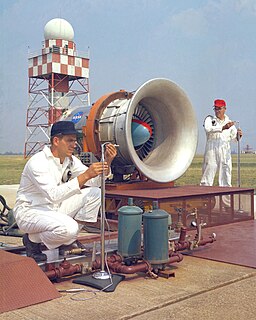
Noise is unwanted sound considered unpleasant, loud or disruptive to hearing. From a physics standpoint, there is no distinction between noise and desired sound, as both are vibrations through a medium, such as air or water. The difference arises when the brain receives and perceives a sound.
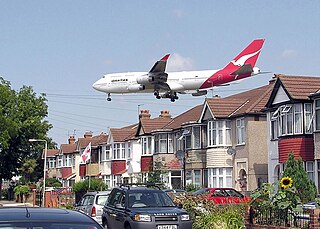
Noise pollution, also known as environmental noise or sound pollution, is the propagation of noise with ranging impacts on the activity of human or animal life, most of them harmful to a degree. The source of outdoor noise worldwide is mainly caused by machines, transport, and propagation systems. Poor urban planning may give rise to noise disintegration or pollution, side-by-side industrial and residential buildings can result in noise pollution in the residential areas. Some of the main sources of noise in residential areas include loud music, transportation, lawn care maintenance, construction, electrical generators, wind turbines, explosions, and people.
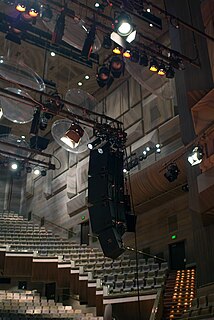
Acoustical engineering is the branch of engineering dealing with sound and vibration. It includes the application of acoustics, the science of sound and vibration, in technology. Acoustical engineers are typically concerned with the design, analysis and control of sound.
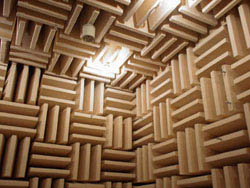
Soundproofing is any means of reducing the sound pressure with respect to a specified sound source and receptor. There are several basic approaches to reducing sound: increasing the distance between source and receiver, using noise barriers to reflect or absorb the energy of the sound waves, using damping structures such as sound baffles, or using active antinoise sound generators.

The Royal Institute of British Architects (RIBA) is a professional body for architects primarily in the United Kingdom, but also internationally, founded for the advancement of architecture under its royal charter granted in 1837, three supplemental charters and a new charter granted in 1971.

Sage Gateshead is a concert venue and also a centre for musical education, located in Gateshead on the south bank of the River Tyne, in North East England. It opened in 2004 and is occupied by North Music Trust.

Architectural acoustics is the science and engineering of achieving a good sound within a building and is a branch of acoustical engineering. The first application of modern scientific methods to architectural acoustics was carried out by the American physicist Wallace Sabine in the Fogg Museum lecture room. He applied his newfound knowledge to the design of Symphony Hall, Boston.

The Acoustical Society of America (ASA) is an international scientific society founded in 1929 dedicated to generating, disseminating and promoting the knowledge of acoustics and its practical applications. The Society is primarily a voluntary organization of about 7500 members and attracts the interest, commitment, and service of many professionals.

Leo Leroy Beranek was an American acoustics expert, former MIT professor, and a founder and former president of Bolt, Beranek and Newman. He authored Acoustics, considered a classic textbook in this field, and its updated and extended version published in 2012 under the title Acoustics: Sound Fields and Transducers. He was also an expert in the design and evaluation of concert halls and opera houses, and authored the classic textbook Music, Acoustics, and Architecture, revised and extended in 2004 under the title Concert Halls and Opera Houses: Music, Acoustics, and Architecture.

Noise control or noise mitigation is a set of strategies to reduce noise pollution or to reduce the impact of that noise, whether outdoors or indoors.

A sound level meter is used for acoustic measurements. It is commonly a hand-held instrument with a microphone. The best type of microphone for sound level meters is the condenser microphone, which combines precision with stability and reliability. The diaphragm of the microphone responds to changes in air pressure caused by sound waves. That is why the instrument is sometimes referred to as a sound pressure level meter (SPL). This movement of the diaphragm, i.e. the sound pressure deviation, is converted into an electrical signal. While describing sound in terms of sound pressure metrics, such as Pascals, is possible a logarithmic conversion is usually applied and the sound pressure level is stated instead, with 0 dB SPL equal to 20 micropascals.

Hydroacoustics is the study and application of sound in water. Hydroacoustics, using sonar technology, is most commonly used for monitoring of underwater physical and biological characteristics.
The Institute of Acoustics (IOA) is a British professional engineering institution founded in 1974. It is licensed by the Engineering Council UK to assess candidates for inclusion on ECUK's Register of professional Engineers. The institute's address is Silbury Court, 406 Silbury Boulevard, Milton Keynes MK9 2AF, United Kingdom. The current president of the IOA is Barry Gibbs. Past presidents include John Hinton OBE, Colin English, David Weston, Tony Jones, Professor Trevor Cox, William Egan, Professor Bridget Shield, and Jo Webb.
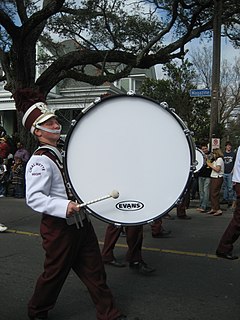
In physics, sound is a vibration that propagates as an acoustic wave, through a transmission medium such as a gas, liquid or solid.

Electric vehicle warning sounds are sounds designed to alert pedestrians to the presence of electric drive vehicles such as hybrid electric vehicles (HEVs), plug-in hybrid electric vehicles (PHEVs), and battery electric vehicles (BEVs) travelling at low speeds. Warning sound devices were deemed necessary by some government regulators because vehicles operating in all-electric mode produce less noise than traditional combustion engine vehicles and can make it more difficult for pedestrians and cyclists to be aware of their presence. Warning sounds may be driver triggered or automatic at low speeds; in type, they vary from clearly artificial to those that mimic engine sounds and those of tires moving over gravel.

The Institute of Continuing Education (ICE) is a department of the University of Cambridge dedicated to providing continuing education programmes which allow students to obtain University of Cambridge qualifications at undergraduate and postgraduate level. Its award-bearing programmes range from Undergraduate Certificates through to part-time Master's degrees. ICE is the oldest continuing education department in the United Kingdom.

Salford Acoustics offers Acoustics and Audio Engineering Courses, undertakes public and industrial research in acoustics, carries out commercial testing, and undertakes activities to engage the public in acoustic science and engineering. It is based in two locations: (i) 3 km west of Manchester city centre, UK, in the Newton Building on the Peel Park Campus of the University of Salford, and (ii) on the banks of the Manchester Ship Canal at MediaCityUK.
The Pioneers of Underwater Acoustics Medal is awarded by the Acoustical Society of America in recognition of "an outstanding contribution to the science of underwater acoustics, as evidenced by publication of research results in professional journals or by other accomplishments in the field". The award was named in honor of H. J. W. Fay, Reginald Fessenden, Harvey Hayes, G. W. Pierce, and Paul Langevin.
Manohar Lal Munjal is an Indian acoustical engineer, honorary professor, and INSA senior scientist at the Facility for Research in Technical Acoustics (FRITA) of the Indian Institute of Science. He is known for his studies on aeroacoustics and finite wave analysis of exhaust systems. He is an elected fellow of all the three major Indian science academies viz. Indian Academy of Sciences, Indian National Science Academy, National Academy of Sciences, India as well as the Indian National Academy of Engineering. He has published three books viz. Noise and Vibration Control, Acoustics of Ducts and Mufflers With Application to Exhaust and Ventilation System Design, and IUTAM Symposium on Designing for Quietness and has contributed chapters to books edited by himself and others. The Council of Scientific and Industrial Research, the apex agency of the Government of India for scientific research, awarded him the Shanti Swarup Bhatnagar Prize for Science and Technology, one of the highest Indian science awards for his contributions to Engineering Sciences in 1986.
References
- ↑ "Sound Advice:The Little Red Book of Acoustics". Archived from the original on 2007-10-31. Retrieved 2007-11-19.
- ↑ "Latest news and jobs in planning, housing and regeneration - Planning…". Archived from the original on 25 June 2007.
- ↑ "Institute of Acoustics: Diploma in Acoustics and Noise Control". Archived from the original on 2007-07-02. Retrieved 2007-07-31.
- ↑ "Architecture Books, Contracts & Regulations | RIBA Bookshops". www.ribabookshops.com. Archived from the original on 2013-02-01. Retrieved 2018-02-10.
- ↑ "Acoustic Consultancy, Noise Assessments and Air Tightness Testing in Sheffield, Leeds, Nottingham, Manchester and London - Blue Tree Acoustics". www.bluetreeacoustics.com. Archived from the original on 2008-04-05.